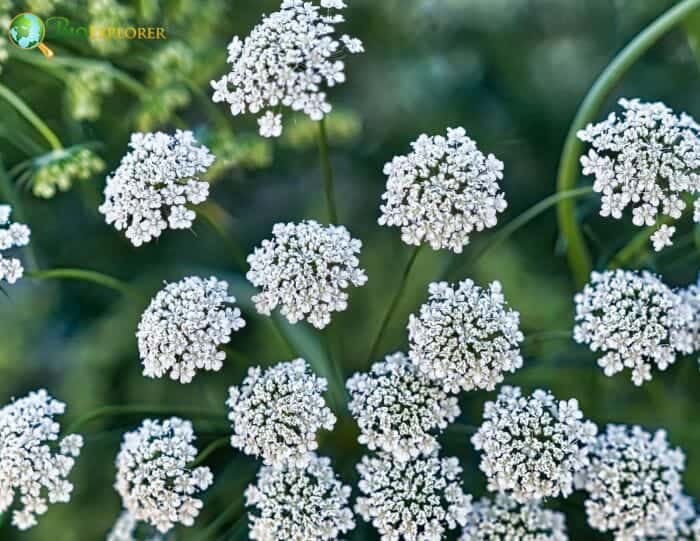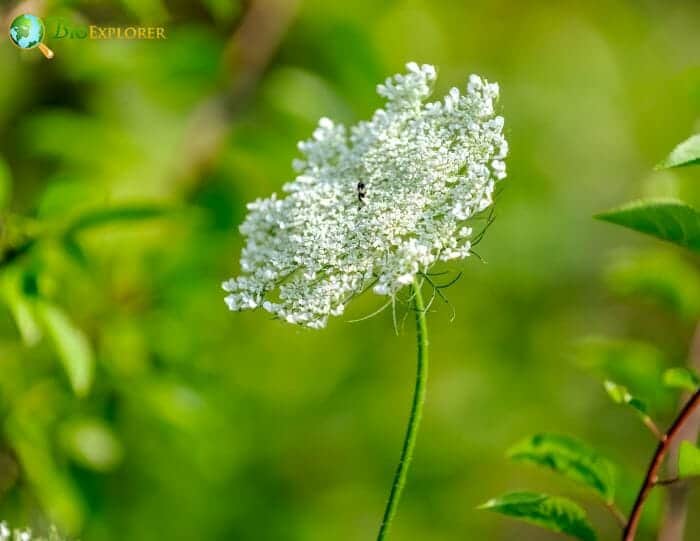
Queen Anne’s lace (Daucus carota) gets its common name from a legend that Queen Anne of England (1665 to 1714) pricked her finger, and a drop of blood fell on the white lace she sewed.

Queen Anne’s lace flower looks like lace, and the flower often has a msingle purple dot in the center. Daucus carota is a biennial herb that belongs to the Apiaceae (carrot) family and is native to Southwest Asia and Europe.

The genus includes about 47 species[1]. Queen Anne’s lace is also known as Rantipole, Lace Flower, garden carrot, Devils Plague, Bee’s Nest, Bird’s Nest Weed, and Wild Carrot.

This plant’s flowers have a flattened white umbel, often with a single purple flower in the center. Typically, the flowers bloom from late spring to mid-autumn.

Each flower racemes consists of many small white flowers. The pinnate leaves are similar to those of the native carrot. The bases of the petioles are flat and broad. Queen Anne’s lace also looks closely like the foliage of water hemlock, fool’s parsley, and poison hemlock. The plant can reach a height of around 1 meter.













